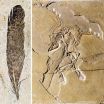(Press-News.org) Providence, RI— Results of a new study published in The American Journal of Managed Care show that the presence of a family caregiver during patient recruitment is associated with a greater rate of completion of a post hospital transitional care coaching intervention, particularly among men.
Discharge is a crucial component of the hospitalization process. Patients' understanding and engagement in discharge plans greatly influence their experiences, health outcomes, such as hospital readmission, and overall costs.
The study looked at discharges using the Care Transitions Intervention (CTI), a low-cost model that provides transitional care coaching to patients at hospital discharge and for 30 days following. The CTI includes an initial in-home visit after discharge and follow-up coaching by phone and has been shown to substantially cut hospital readmissions. "Previous research has established the effectiveness of the CTI in aiding post hospital transitions, but including a family caregiver had not been carefully looked at before," said lead author Gary Epstein-Lubow, MD, assistant unit chief of the inpatient geriatric unit at Butler Hospital, and assistant professor of Psychiatry and Human Behavior at The Alpert Medical School of Brown University.
For this study, the researchers looked at a total of 2,747 inpatients from six Rhode Island hospitals between 2009 and 2011 who were targeted as eligible to participate in the CTI. When a family caregiver (defined as a non-patient adult at the patient's bedside) was present, he or she was included in the in-hospital consent conversation about coaching, and the patient and family caregiver were coached together.
Among the 2,747 individuals approached, 56 percent consented to participate in the CTI. When compared to patients without a family caregiver present for the in-hospital discussion, patients with a family caregiver had significantly higher consent rates to the intervention, with nearly 69 percent consenting, while only 53 percent of patients who were alone consented. Of the patients who agreed to the CTI, patients with family caregivers present during enrollment were more than five times as likely as patients without family caregivers present to complete the intervention and men with family caregivers present during enrollment were nearly eight times as likely to complete the intervention as men without family caregivers.
"These results bolster others' recommendations to include caregivers in quality improvement interventions to improve post-hospital transitions," said a second lead study author Rosa Baier, MPH, Senior Scientist at Healthcentric Advisors, the study's lead organization.
The researchers note that family caregiver involvement in the CTI enrollment was by convenience. Since the CTI was designed for delivery to patients, there were no attempts made to target family caregivers or to recruit participants during a time when a family caregiver was present; in other words, family caregivers were not sought out, but were included if present during intervention consent. It is likely that many participants in the "patients without family caregivers" group were, in fact, aided by a family caregiver. "Future studies should actively seek to include caregivers who may not be readily available in the hospital but do shoulder responsibilities regarding transitional care and at home," said Dr. Lubow. "As well as collect more in depth data about caregiver demographics."
INFORMATION:
The study was sponsored by the Centers for Medicare & Medicaid Services (CMS), Department of Health and Human Services.
About Butler Hospital
Butler Hospital is the only private, nonprofit psychiatric and substance abuse hospital serving adults, seniors and adolescents in Rhode Island and southeastern New England. Founded in 1844, it was the first hospital in Rhode Island and has earned a reputation as the leading provider of innovative psychiatric treatments in the region. The Major Affiliated Teaching Hospital for Psychiatry and Behavioral Health at The Warren Alpert Medical School of Brown University, Butler is recognized worldwide as a pioneer in conducting cutting-edge research. http://www.Butler.org
About Healthcentric Advisors
Healthcentric Advisors is a non-profit health care quality improvement agency providing consulting, research and education services. With a staff of approximately 50 physicians, nurses, educators, analysts and other professionals, Healthcentric Advisors is a sought-after partner to national and local government agencies, foundations, insurers, health care providers, stakeholders and educational institutions on health care quality improvement initiatives. It serves as the Medicare Quality Improvement Network-Quality Improvement Organization (QIN-QIO) for the six New England states. Learn more at http://www.HealthcentricAdvisors.org.
There's more to the decline of the once mighty ancient Assyrian Empire than just civil wars and political unrest. Archaeological, historical, and paleoclimatic evidence suggests that climatic factors and population growth might also have come into play. This is the opinion of Adam Schneider of the University of California-San Diego in the US, and Selim Adali of the Research Center for Anatolian Civilizations in Turkey, published in Springer's journal Climatic Change.
In the 9th century BC, the Assyrian Empire of northern Iraq relentlessly started to expand into most of ...
Washington, DC (November 5, 2014) – Since the 1920s, scholars and politicians have blamed violence in movies and other media as a contributing factor to rising violence in society. Recently the responses to mass shootings in Aurora, CO and at Sandy Hook Elementary followed this theme as media consumption came into the equation. But can consumption of violent media really be a factor in real-world violence? A recent study published in the Journal of Communication by a researcher at Stetson University found that there were no associations between media violence consumption ...
For years, a multidisciplinary team of Johns Hopkins researchers has tracked an elusive creature, a complex of proteins thought to be at fault in some cases of sudden cardiac death. As they report Nov. 5 in the online edition of Nature Communications, they have finally captured images of the complex. Those images reveal the connection between some genetic mutations and electrical abnormalities of the heart and provide a starting point for designing therapies.
Sudden cardiac death is often caused by conditions that affect electrical signaling in the heart. Genetic studies ...
Berlin, Germany (November, 2014) – Reconstructing ancient life has long required a certain degree of imagination. This is especially true when considering the coloration of long-extinct organisms. However, new methods of investigation are being incorporated into paleontology that may shed light (and color) on fossils. Research presented at the recent Society of Vertebrate Paleontology meeting shows the importance of using new imaging technologies in reconstructing the color of Archaeopteryx, one of the most famous and important fossils species.
Ryan Carney of Brown ...
Berlin, Germany (November, 2014) – Unexpectedly one of the largest diamond mines in Africa, Catoca in Angola, holds 118 million year old dinosaur, crocodile and large mammal tracks. The mammal tracks show a raccoon-sized animal, during a time when most were no larger than a rat.
Nearly 70 distinct tracks were recovered in the Catoca mine in Angola. All the tracks were found in a small sedimentary basin, formed about 118 Ma, during the Early Cretaceous, in the crater of a kimberlite pipe.
The most important of these finds are those whose morphology is attributable ...
SALT LAKE CITY, Nov. 5, 2014 – University of Utah engineers developed the first room-temperature fuel cell that uses enzymes to help jet fuel produce electricity without needing to ignite the fuel. These new fuel cells can be used to power portable electronics, off-grid power and sensors.
A study of the new cells appears online today in the American Chemical Society journal ACS Catalysis.
Fuel cells convert energy into electricity through a chemical reaction between a fuel and an oxygen-rich source such as air. If a continuous flow of fuel is provided, a fuel ...
While roses are red, and violets are blue, how exactly do flower colors change?
In the case of penstemons, with over 200 species to choose from, scientists Carolyn Wessinger and Mark Rausher have now shown that turning their flowers from blue to red involves knocking out the activity of just a single enzyme involved in the production of blue floral pigments.
A genetically conserved biochemical pathway produces the vivid blue pigments that they found to mutate over time to produce red. To shift into red pigment production, the enzyme flavonoid 3', 5' –hydroxylase ...
MANY patients whose lung cancer is diagnosed as an emergency in hospital reported difficulties in previously seeing their GP, according to research presented at the National Cancer Research Institute (NCRI) Cancer Conference in Liverpool today (Tuesday).
The study, carried out by researchers from the London Cancer Alliance (LCA) and King's College London, investigated around 130 patients who were diagnosed with lung cancer after attending as an emergency at one of seven hospitals in south and west London.
Overall, nearly half of the patients reported that something ...
SCIENTISTS have found a possible way to halt one of the most common faults in many types of cancer, according to research presented at the National Cancer Research Institute (NCRI) Cancer Conference in Liverpool today (Wednesday).
A team of scientists at the Max Planck Institute of Molecular Physiology in Germany has
uncovered a new strategy and new potential drug to target an important signalling protein in cells called Ras, which is faulty in a third of cancers.
When the Ras protein travels from the centre of a cell to the cell membrane, it becomes 'switched on' ...
PATIENTS with a specific type of oesophageal cancer survived longer when they were given the latest lung cancer drug, according to trial results being presented at the National Cancer Research Institute (NCRI) Cancer Conference today (Wednesday).
Up to one in six patients with oesophageal cancer were found to have EGFR duplication in their tumour cells and taking the drug gefitinib, which targets this fault, boosted their survival by up to six months, and sometimes beyond.
This is the first treatment for advanced oesophageal cancer shown to improve survival in patients ...


